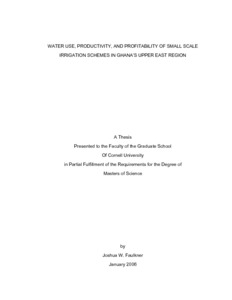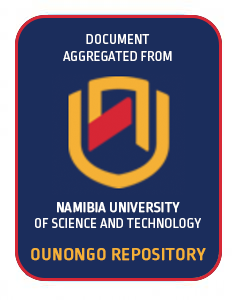Water governance in the Mekong region: the need for more informed policy-making
Recurring water crises, global water initiatives, and demands for water reforms by development banks, have all pushed water up the agenda of most Mekong-region countries. Many changes have already been made. Now decision makers need to know what has worked, what hasn?t, and why. To find out, IWMI has reviewed new water policies, plans and laws, and assessed participation, the new water ?apex bodies?, and integrated water resources management (IWRM). The findings show that top-down state policies based on ?blueprints?
Water use productivity and profitability of small scale irrigation schemes in Ghana's Upper East Region
Sustainable agricultural intensification in forest frontier areas
"The Lore Lindu region in Indonesia—as in many forest frontier areas in Southeast Asia—has experienced rapid deforestation due to agricultural expansion in the uplands, at the forest margins. This has resulted in aggravated problems of erosion and water availability, threatening agricultural productivity growth. At the same time, technical progress is promoting agricultural intensification in the lowlands. In this article, we examine how improved technologies for paddy rice cultivation in the lowlands have affected agricultural expansion and deforestation in the uplands.
Seaborne measurements of near infrared water-leaving reflectance: The similarity spectrum for turbid waters.
Theory and seaborne measurements are presented for the near infrared (NIR: 700–900 nm) water-leaving reflectance in turbid waters. According to theory, the shape of the NIR spectrum is determined largely by pure water absorption and is thus almost invariant. A ‘‘similarity’’ NIR reflectance spectrum is defined by normalization at 780 nm. This spectrum is calculated from seaborne reflectance measurements and is compared with that derived from laboratory water absorption measurements. Factors influencing the shape of the similarity spectrum are analyzed
Water rights and politics in Andean water policy reforms
Water and indigenous peoples
UNESCO publication






